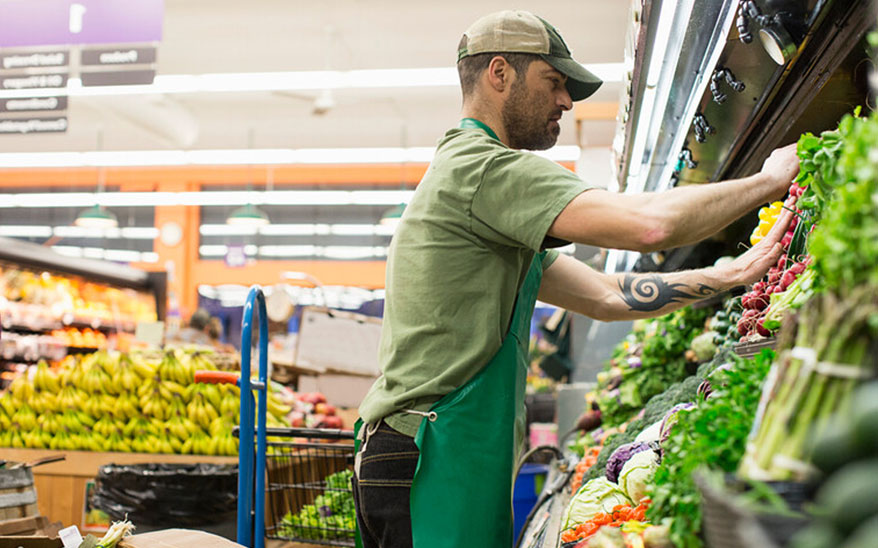7 Predictions All Retail & Supply Chain Experts Need To Watch Out For In 2023
- January 9, 2023
- Manhattan Staff

The English composer and man of letters, Theodore Hook, once stated, “the best way to predict the future is to invent it." This quote seems apt as we approach the end of another challenging year and look ahead with both trepidation and positivity to what 2023 might hold in store.
Although the trials of the pandemic are largely behind us, new challenges (not least economic, social, and environmental) lie ahead as global disruption remains the rule rather than the exception.
Nevertheless, with innovation, collaboration, and positivity, the New Year holds the potential to be great! As we close the door on 2022, the Manhattan team has taken the time to look ahead and highlight seven areas retail and supply chain experts should look out for in 2023.
If we missed any, do get in touch and let us know your thoughts!
Store Modernization Is a Top Priority
The traditional store and its perfunctory function is in for a renaissance in 2023 as they become multi-function spaces, going beyond display and selling, to microfulfilment, returns, and even customer service hubs.
Expect stores to handle a larger share of online returns as retailers will look for cost optimizations across their supply chains. Also, as returns see an overall percentage increase, retailers will start increasing the fees/shipping charge associated with returning items bought online, leading to a rise in customers using physical stores for these returns far more.
We can expect Buy Online Pickup In Store (BOPIS) as a fulfillment method to continue to increase as well. With retailers optimizing their logistics costs in efforts to maintain margins for online sales, they will find ways to incentivize BOPIS; either by passing on the shipping charge or providing some discounts for BOPIS with the hope that this can reduce their overall shipping costs and increase store footfall at the same time.
The Onward March of Social Commerce
1 in 3 US consumers surveyed* want to buy and check out on social media using Google, Apple, Amazon, and Facebook Pay. Companies are fast expanding their reach to younger demographics by exploring social media platforms like TikTok and Douyin as sales channels in addition to traditional marketplaces such as Amazon, Walmart, and Target. We should expect the proliferation of different payment and social shopping platforms to accelerate at a pace in 2023.
The Evolving Payment Landscape
Expect the appetite for cashless payment options, e-wallets, and crypto to continue in 2023. As it grows, it will be critical for companies to adopt and leverage these new technologies into their in-store and online systems if they are to keep pace with increasingly digitally-savvy consumers.
As the cost-of-living crisis really bites in the New Year, retailers will look to provide their customers with more flexible payment options. As such, we can expect ‘buy now pay later’ features to continue to grow strongly in 2023.
Consumers demand greener options
Product sourcing and sustainability information will become the new norm in 2023. Social responsibility and sustainability will continue to be top of mind in the New Year, not only driven by regulation and consumers, but also by today’s popular zeitgeist.
In 2022, nearly half (49%) of consumers surveyed by our Omnichannel Retail reported environmental/sustainability efforts were important or top considerations when choosing where and with whom to shop. We expect this figure to rise sharply as events like COP27 and global initiatives like Earthshot shine a light on the urgency for governments, organisations, and individuals to become more sustainable in 2023.
Sustainability will become more of a topic in relation to the supply chain. Customers are already demanding greener options such as sustainable packaging, processes, and shipping. Retailers will need to acknowledge this and take active steps to become more transparent about their own end-to-end product offerings, including the supply chain networks that join them all together.
Automation and Robotics
As labour continues to be a significant constraint for organisations all over the globe, not least in the context of warehouses, automation and robotics proliferation will accelerate. While we don’t expect robots to replace humans in key supply chain roles, we will see greater progress in man and machine collaboration as more robots are developed that complement the human workforce by taking over mundane, repetitive tasks.
Automation and robotics have been of great interest among our customers, but many have been held back due to supply chain and resource challenges among those automation/robotic vendors. We see those constraints loosening and the growth of the Robots as a Service model will likely increase in popularity in 2023 as customer’s ‘catch up’ with their automation strategies.
Visibility is Key At All Times
The importance of ‘visibility’ will increase and expand to not only include product in motion, but also to product/inventory in the yard and the warehouse. As market volatility continues, shippers will need the ability to react to ongoing disruption in near real-time and knowing exactly where inventory is at any point in time is critical to their success.
According to recent research one in four consumers now expect store associates to know stock availability/inventory to be able to serve them effectively. But only 3% of retailers believed that they had an accurate overview of their inventory across their entire network (in-store and online) 100% of the time. Expect retailers to work on closing this inventory visibility gap fast in the New Year or risk losing customer loyalty & dollars.
Collaboration Key to Staying Ahead in 2023
The more flexible and agile the supply chain, the more integration in wider ecosystems will be required, allowing companies to leverage their partners' capabilities as part of wider, more end-to-end offerings. Rather than individual companies competing with each other, we should expect more rivalry between competing ecosystems in terms of technology, product, and go-to-market strategies in 2023.





